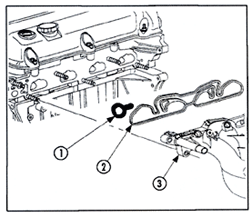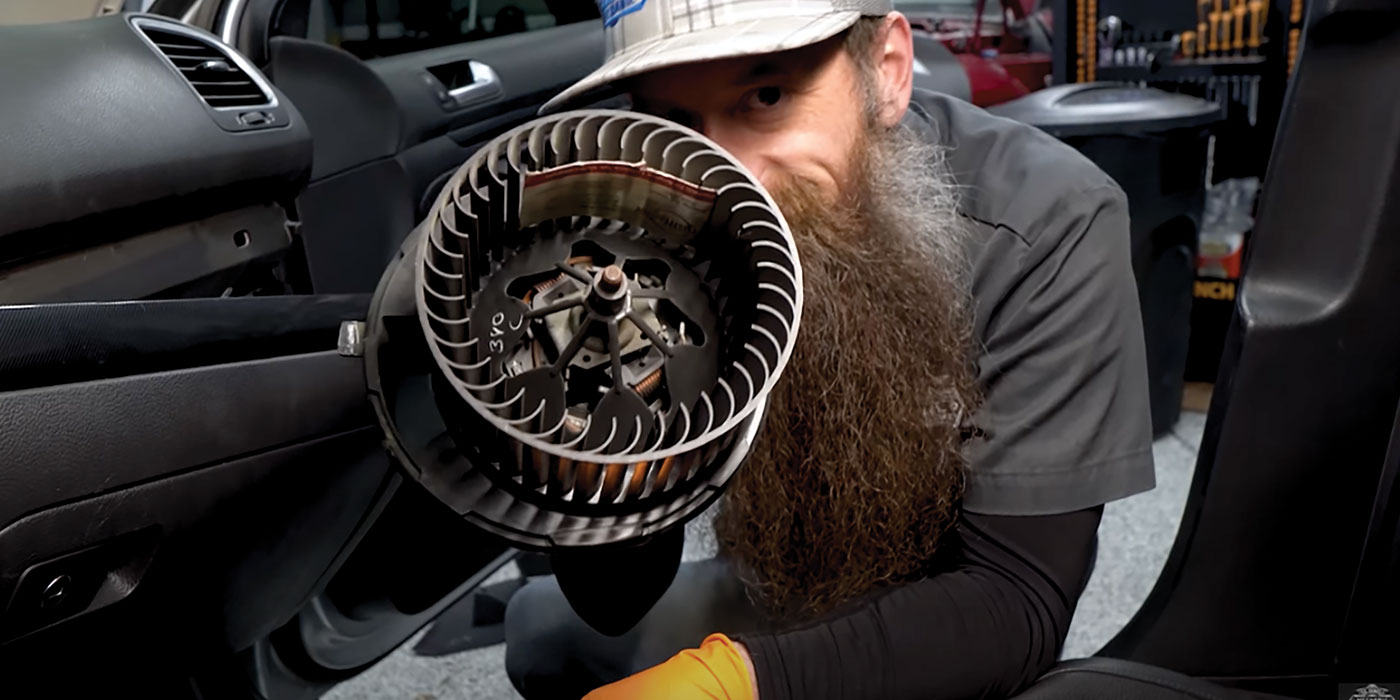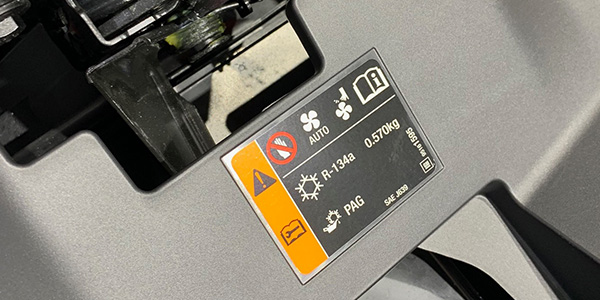On January 7, 1985, Saturn was born.
That day, Roger Smith, the president of General Motors, announced the decision to create a whole new car company from the ground up. There were 99 people chosen to create a vision of what GM needed to do in order to prosper in the small car business into the 21st century.
GM designed a whole new car with an all new drivetrain that was surrounded by a space frame structure and covered with a combination of plastic and metal body panels. The company negotiated an innovative labor contract that revolved around teamwork, involving the UAW in the decision-making process from day one. And, it created a whole new dealer body that treated the customer with respect.
It was truly “A Different Kind of Car” and “A Different Kind of Company,” just like the ads said. Roger Smith’s dream became a reality in 1990, and, since then, the great Saturn experiment has affected all of GM in one way or another.
New Engine Technology
Saturn cars debuted with two new 1.9L engine designs that incorporated some interesting new technology, as well. Both the blocks and heads were made of aluminum that was cast using the “lost foam” technology that Saturn pioneered for production use. With this process, polystyrene granules are expanded by steam and blown into molds to make foam patterns. Several patterns are glued together to create a mold that is the exact replica of the finished casting, both inside and out.
The mold is then dipped in a ceramic coating and dried before it is placed in a bucket that is filled with casting sand. When molten aluminum is poured into the exposed risers that are part of the mold, it vaporizes the foam and solidifies into a casting that is the exact shape of the original mold. This process allows greater design flexibility and fewer parts that require less machining. It also offers better dimensional control than traditional casting methods.
Unfortunately, this process also created a brand new problem for those in the engine rebuilding industry because it allowed Saturn to cast the oil passages in the block and SOHC heads instead of drilling them; consequently, there are no plugs and there is no access to the oil galleys. The SOHC heads can be drilled and tapped where the oil passages intersect so they can be properly cleaned before being rebuilt, but the block presents a unique challenge because it can’t be drilled at every junction.
 Early Saturn Powerplants
Early Saturn Powerplants
As we noted, originally, there were two 1.9L 4-cylinder engines available from Saturn, a Single Overhead Camshaft (SOHC) and a Dual Overhead Camshaft (DOHC) version. Though different, the 1.9L engines shared a common block, crank, rods and oil pump, along with several other components. And they both have an 82 mm x 90 mm (3.23″ x 3.54″) bore and stroke.
The cast crank is supported by five mains. Forged rods are used with full-floating pins and cast pistons that have short skirts. The oil pump is driven by two flats on the crank sprocket. The SOHC motor uses a dished piston without valve reliefs, along with a small chamber in the head to get a 9.3:1 compression ratio (the minimum compression is 180 psi). An eight-valve head is used with the cam located in a tunnel, just like the one on the Ford Escort.
 The cam is chain driven and hydraulically tensioned. Roller hydraulic lifters are used along with shaft-mounted rockers that pivot on needle bearings. Conical valve springs are used. The engine is not free-wheeling, but that shouldn’t create a problem since it is chain driven.
The cam is chain driven and hydraulically tensioned. Roller hydraulic lifters are used along with shaft-mounted rockers that pivot on needle bearings. Conical valve springs are used. The engine is not free-wheeling, but that shouldn’t create a problem since it is chain driven.
The DOHC motor has pistons with a large shallow dish and two valve reliefs. The compression ratio is 9.5:1. It uses multiport injection instead of the throttle body setup that was used on the SOHC motor through 1994. It’s a 16-valve engine with two chain-driven cams that are held in place with 10 bearing caps. Hydraulic bucket lifters act directly on the cam and the valves. Conical valve springs are used on the DOHC head, too. This engine is not free-wheeling either.
Since these two distinctly different engines shared a number of common components, we’ll go over some of the similarities and differences now.
Blocks: There are two block castings. The original block (c/n 21000950) that was used in ’91 and ’92 (with a few carried over into early ’93) had two threaded bosses on the outer edge of the water pump housing. They were only used for an extra transmission support in ’91 when the manual transmission was used with the DOHC engine, but all of the early blocks had them. They were eliminated on the ’93 and later blocks (c/n 21007255) because they were no longer used.
Cranks: There is only one crank casting (c/n 21000883), but it comes in two flavors, so it can be difficult to identify. Both versions have a notched reluctor wheel for direct ignition, but the notches in the 1993-’94 version were advanced 10 degrees more than they were on the early crank.
Here’s a quick way to tell the difference: With the snout facing you and the keyway at six o’clock, check the location of the double notches to the right of 12 o’clock; if the one on the far right is about even with the end of the cast window in the reluctor wheel, it’s a late crank with advanced timing. If both of the double notches are closer to 12 o’clock and both are well beyond the left edge of the window, it’s the early version with retarded timing. These two cranks cannot be interchanged.
Rods: All the connecting rods are the same. They are bushed in the small end. There is no casting number.
Heads: SOHC – The original SOHC head (c/n 21006649) that came out in ’91 was used through 1994. When Saturn switched to sequential port injection in ’95, it added “eyebrows” at the top of the intake ports to make room for the individual injectors that were angled down in from the intake manifold. The ’95 head is a 21007136 casting.
DOHC – The original DOHC head (c/n 21006469) had four center bolts that held the rocker cover on. It was used in 1991, ’92 and into the early part of ’93 when it was replaced by a revised version with the same casting number that only had three center bolts for the rocker cover.
 The four-bolt head can be used to replace a three-bolt version, so Saturn supplied it as a fits-all service head for all the DOHC applications through ’94. The third DOHC head was introduced in ’95 because the angle of the EGR mounting pad was changed. It’s a 21006937 casting, and it was used up through 1997.
The four-bolt head can be used to replace a three-bolt version, so Saturn supplied it as a fits-all service head for all the DOHC applications through ’94. The third DOHC head was introduced in ’95 because the angle of the EGR mounting pad was changed. It’s a 21006937 casting, and it was used up through 1997.
Front Cover: These engines use different front covers. The SOHC cover is a 21006370 and the DOHC is a 21006371. The same gerotor oil pump is used for both of them. It is driven by two flats on the crank sprocket.
Pistons: The SOHC engines use a short-skirted piston with a small, deep dish in the center and no valve reliefs. The same piston was used from 1991 through ’94. In 1995, the top ring was moved closer to the crown to reduce the crevice volume and hydrocarbon emissions. It’s now only 3 mm from the top of the piston. This required a special piston that used a nickel alloy bonded into the top land in order to prevent ring groove pound out.
The DOHC piston is similar to the SOHC piston except that it has a shallow dish that’s larger in diameter with two small valve reliefs that are side-by-side. The top ring was moved up closer to the crown in 1995, too.
Rings: The same rings were used for both engines from 1991 through ’94. They are 1.5 mm/ 1.5 mm/3 mm in width. We suspect that both ring sets were changed in 1995 due to the revised placement of the top ring.
Internal Problems
Should you ever tear down one of the 1.9L engines at your shop, inspect the front of the block very carefully for damage caused by a loose timing chain. If the oil isn’t changed often enough, the relief hole in the tensioner gets plugged up, causing the tensioner to put too much pressure on the chain. Once the tensioner is fully extended and the chain gets sloppy, it chews away on the adjacent surfaces of the block. If this is the case, plan on replacing all the tensioners and repairing some damaged blocks.
The early SOHC cylinder heads aren’t cracked very often, but a high percentage seem to have bad cams and cam bores. This is because of either oil starvation during startup, or due to the debris from the timing chain problem that was noted above. The later SOHC heads should be checked very carefully because they sometimes crack in the front cam bore and topside into the lifter bores.
The DOHC engines don’t seem to be as prone to loose cams and heads, but they do occasionally crack in between either the third and fourth or fourth and fifth cam journals. It’s best to check them over carefully. If you get oil in the water on a DOHC motor, it’s probably coming from a crack in the head.
The oil was restricted to the topside with an “integral cylinder head oil feed orifice” in all of the 1991 and ’92 engines. Beginning in 1993, the oil flow topside is limited by a 4 mm restriction in the head gasket itself instead of this orifice, so it should be removed from the blocks on the older engines when they are rebuilt. It’s located in the front oil passage on the right side of the deck surface, just behind the alternator bracket. If it’s not removed, you may encounter scuffing of the cam and lifter bores during startup.
Some Saturn owners may have noticed a loss of engine coolant, low coolant levels and/or engine overheating. This is common to vehicles equipped with the 2000-’01 GM 1.9L DOHC engine.
According to the AERA Technical Committee, coolant loss may be due to an intake manifold gasket leak at the coolant passage located behind the number four cylinder intake port, possibly during cold engine operating conditions.
 To prevent coolant loss, Saturn has revised the intake manifold gasket for those DOHC engines. The new gasket is a two-piece design as shown in Figure 1 consisting of a separate coolant seal (1) that is made of a different material and is black in color and a shortened intake manifold gasket (2) of the same material and orange in color as in the original one-piece design. The manifold is shown as (3).
To prevent coolant loss, Saturn has revised the intake manifold gasket for those DOHC engines. The new gasket is a two-piece design as shown in Figure 1 consisting of a separate coolant seal (1) that is made of a different material and is black in color and a shortened intake manifold gasket (2) of the same material and orange in color as in the original one-piece design. The manifold is shown as (3).
Another common complaint from Saturn owners involves the engine stalling (SOHC version) after startup. If the vehicle is equipped with an automatic transaxle, the engine may stall after the vehicle is initially started, or stall or stumble when first shifted into gear. If the vehicle is equipped with a manual transaxle, the engine may stall after the vehicle is initially started, when the vehicle is at a complete stop and the steering is turned to its maximum left or right position, or during launch when the engine is cold.
The cause of these conditions may be caused by loss of fuel pressure, throttle body injector unit gasket protruding into the throttle bore (1991-’92 through VIN NZ 151498) and/or engine calibration.
Possible causes for the loss of the fuel pressure include the TBI fuel pressure regulator assembly valve not seating due to debris, or a leaking fuel pump check valve, fuel line or injector. This condition can cause the engine to stall immediately after start, usually within 15 seconds. The gasket between the TBI unit (all 1991 and 1992 engines built before and including VIN NZ151498) and intake manifold can protrude into the throttle body bore causing fuel to puddle on top.
The engine calibration (1991-’92 vehicles only) can cause a start/stall condition due to the calibration supplying a lean startup fuel mixture, if the ambient temperatures are between 68







